What is sustainable travel? Well, isn’t that a good question! I am delving into what sustainable tourism looks like around the world: from Colombia to Germany! Read real life stories and examples of how sustainable travel can transform our world for the better and become a part of the change!
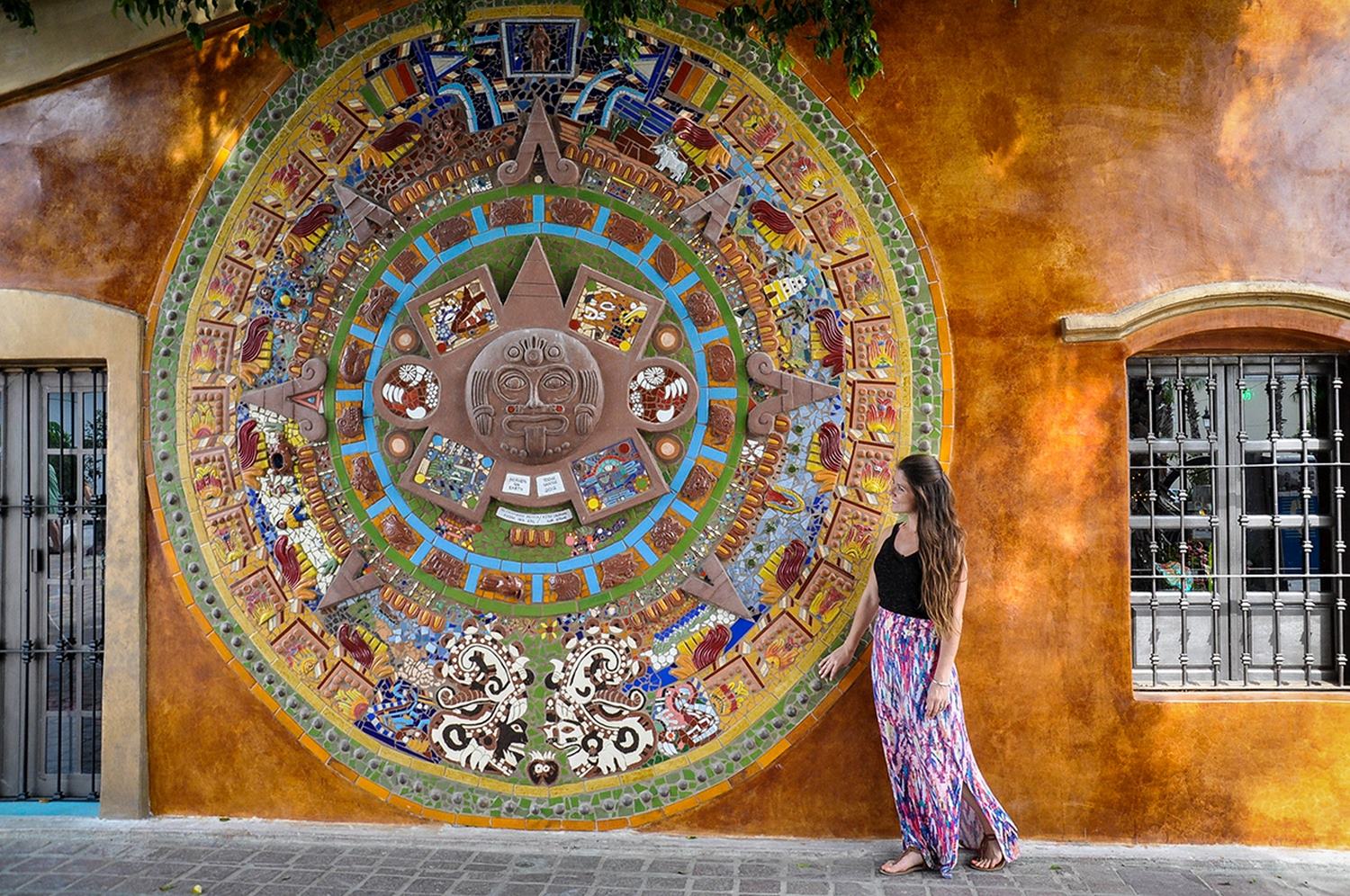
I am still pinching myself.
Just under 3 months ago, I got the news that I was chosen by the United Nations World Tourism Organization (UNWTO) as the winner of the Responsible Traveller competition.
Like, whaaaaat?!
Just being recognized by such a respectable organization was in itself a dream come true. It was the capstone competition for the International Year of Sustainable Travel. And the prize was next-level-amazing…
When I first told people about my grand prize and that I would be traveling around the world, to 5 different countries, to learn about and see examples of sustainable tourism in each place,” they didn’t all jump up and down with glee like I was doing…
The first thing they did was cock their head, narrow their eyes and ask with stressed syllables, “What exactly is sustainable travel?”
A legitimate question, if I do say so myself.

Lately, “Sustainable Tourism” has become a buzzword of sorts, and there’s no denying it’s somewhat scientific-sounding and hard to grasp.
Each time I tried to answer this question, I felt like I rambled on in a circular tangent that served more to confuse the asker of the question as well as myself.
The thing is, I truly don’t think sustainable tourism can be summed up in a crisp, clean 1-sentence definition.
Sustainable travel takes responsible tourism one step further. It encompasses the environment, the local people, the culture, the history of a place. It is as fluid as our constantly evolving society. And it looks different from one location to the next.
But okay, if I was forced to create a simplified, non-rambling definition, I guess it would look something like this:
Sus·tain·a·ble Tour·ism
Creating positive change through travel.
(There are plenty of definitions out there, but this is mine)
How does tourism change a location?
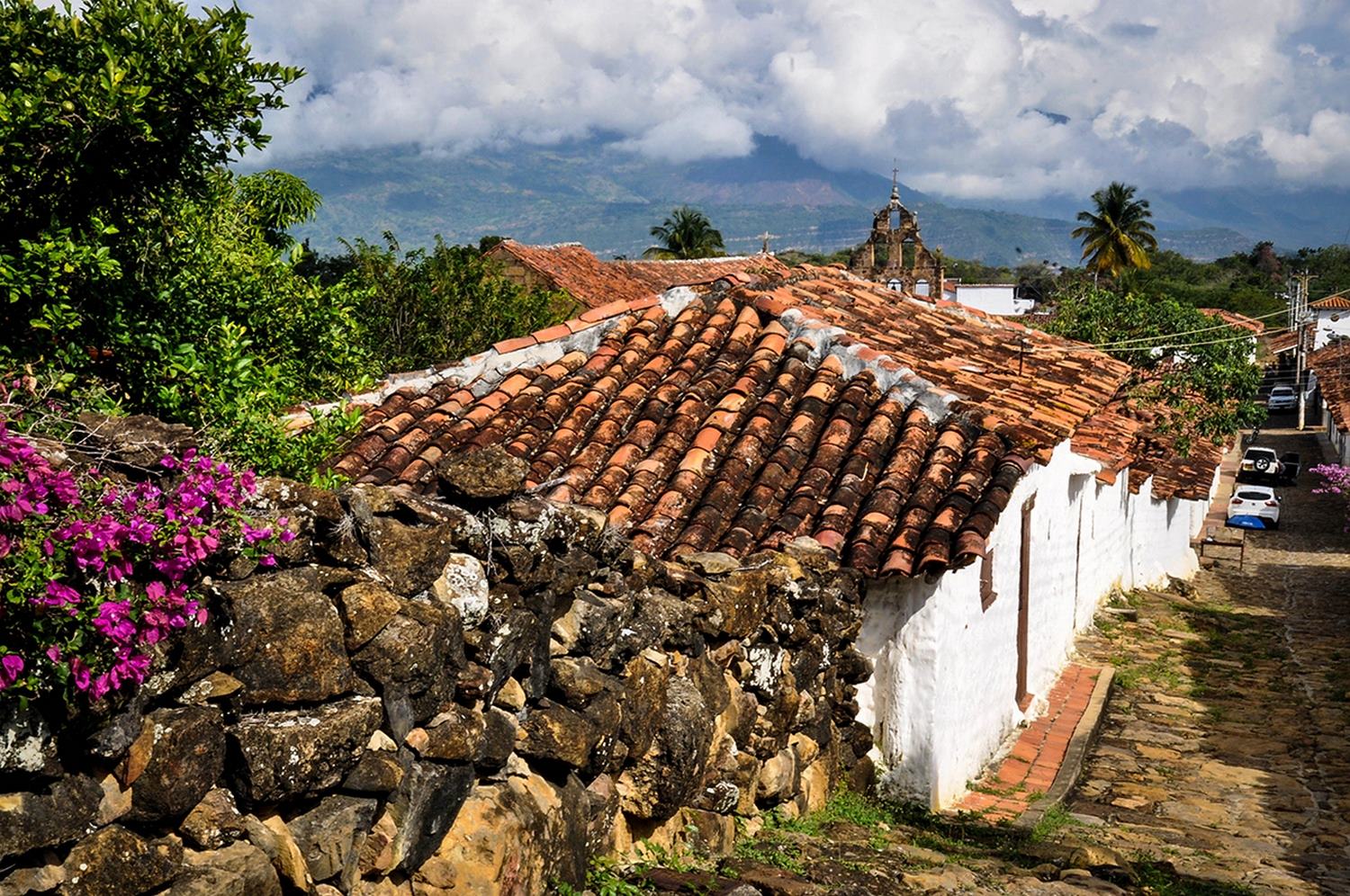
I’m gonna give it to you straight: Tourism undoubtedly changes a place. It can be for better or worse, but it brings change nonetheless.
The bad: An influx of tourists can bring Starbucks and McDonalds, with which local joints just can’t compete. Tourism can transform a charming village into a nondescript town you’d find anywhere in the world. It can create a cycle of dependency in which locals find their wealth and worth solely from tourism. It can bring pollution and the violation of human rights.
Let’s bring it back to the basics: The definition of the word “sustainable” means that something can be maintained or continued over a period of time. If tourism brings more bad change than good, the environment will be destroyed, resources dried up, culture will be diluted, and a once special place will eventually have nothing to offer. Tourism won’t continue. And locals will be left to deal with the consequences. If not managed correctly, tourism can be a very unsustainable business.
I know, I know, I’m being a Debby Downer. But tourism can bring good change too.
The good: It can create jobs, improve infrastructure and revitalize a struggling economy. It can be the catalyst needed to preserve culture. It can connect people from around the globe and create a deep sense of understanding and respect that can’t be replicated in the absence of tourism.
Sustainable travel is ensuring that tourism brings more positive change to a place than negative change.
Related: If you want know more about the Dark Side of Tourism, this article is exactly what you’re looking for.
So what kind of change are you going to bring?
If you want to bring positive change on your next trip, you’re in luck. We put together an article that breaks down practical ways you can plan a sustainable vacation.
(And I want to give you a big, cyber e-hug for reading this article and taking the first step to making our world a better place through travel!)
What I learned from my trip with the UNWTO
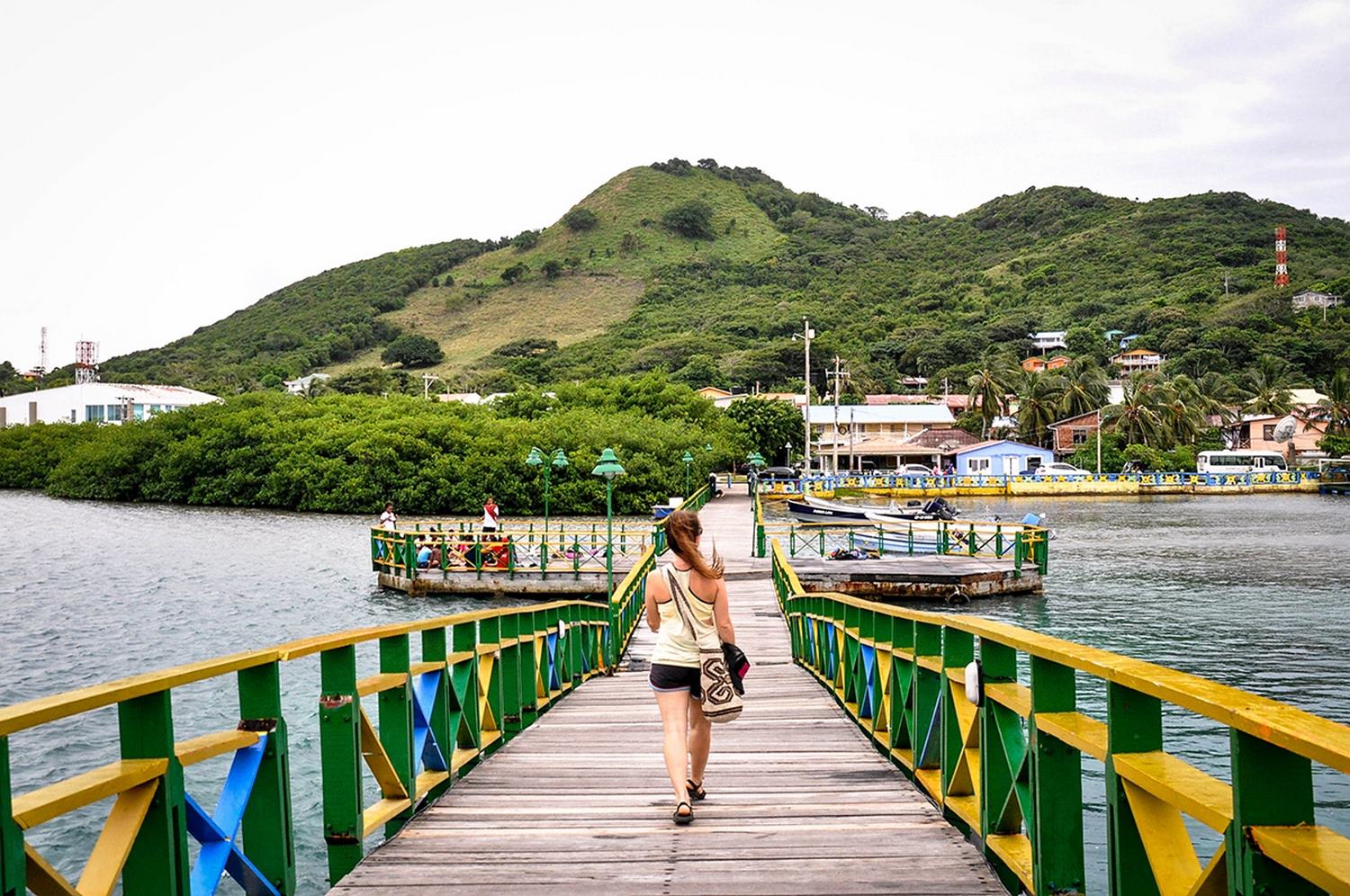
One of the biggest lessons I took away from my trip with the UNWTO is that sustainable tourism means something different to each location.
A developed nation where most of their citizens’ basic needs are met is going to have a different focus than a developing country where poverty is rampant and education is not accessible to all.
You see, creating positive change can mean different things because each location’s needs are different.
Examples of sustainable tourism around the world
Each of the locations I visited on my month-long trip with the UNWTO was chosen specifically because of their commitment to sustainable travel. Some of the places I visited were focused on the impact tourism has on the environment, while others were primarily concerned with how an influx of visitors will affect their communities and the people in them.
While I was in each country, I came up with 3 unique words that represent how I saw sustainable tourism in action.
I’ll be completely honest with you: some of these destinations showed me much more tangible examples of sustainable tourism and what they are doing to ensure tourism brings positive change. And that is to be expected because it looks different in each place.
Come along as I walk you through what sustainable travel looks like in five different places around the world…
What Sustainable Tourism means for: Colombia
Inclusion, Community, Respect
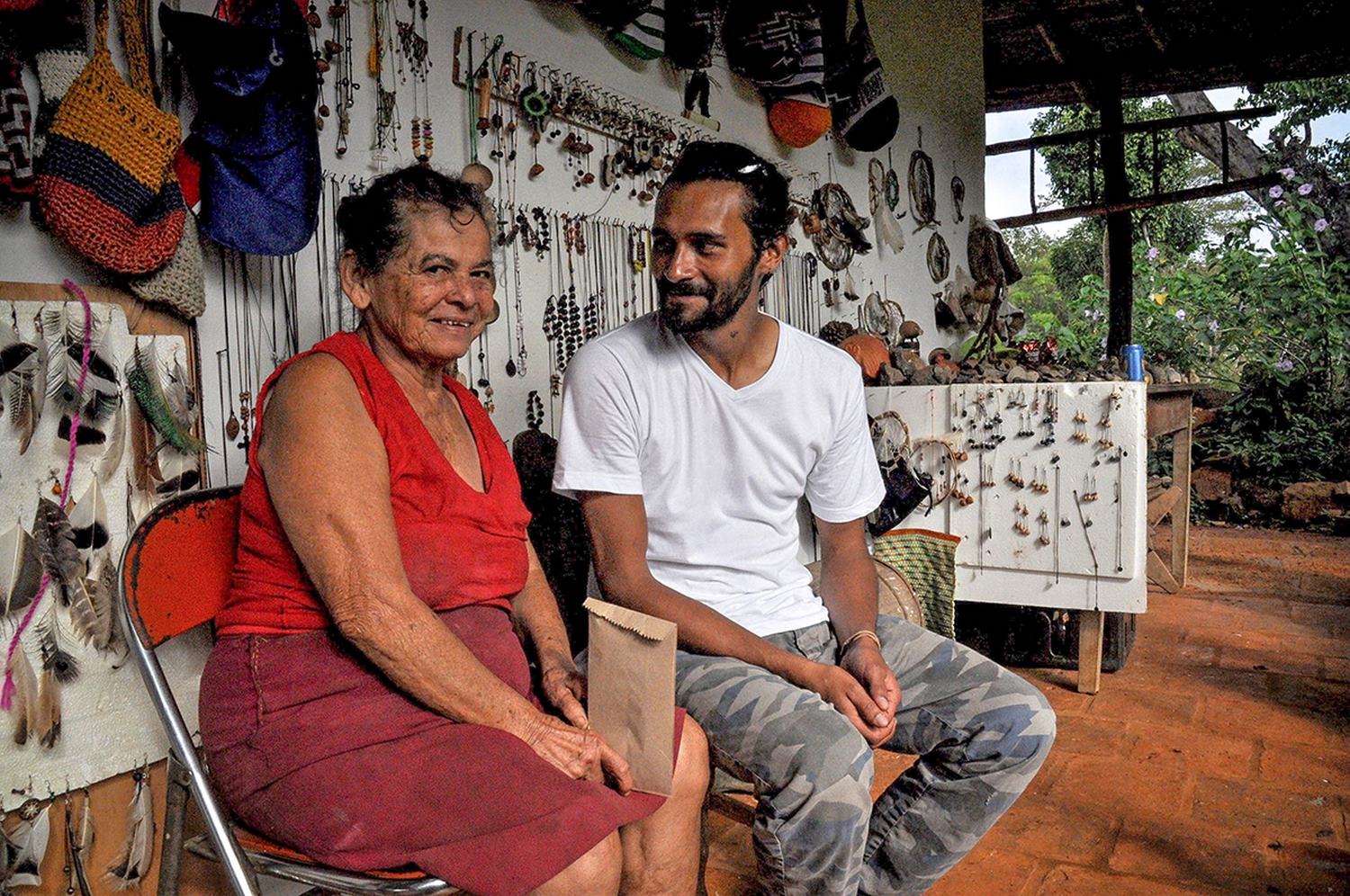
The ministry of tourism in Colombia is putting a lot of effort into ensuring that more tourism means more opportunities for local people. One of the best examples I saw of this was on the Caribbean island of Providencia. This tiny slice of paradise is an incredible example of harnessing the power of tourism to empower and benefit the local community.
Locals have banded together to refuse big chains coming in and building resorts, and instead have insisted that the local people should reap the monetary benefits of tourism. Keeping this power in their own hands has meant growth is slow, but that’s what they want: to keep it small.
Many locals I spoke with emphasized the fear that tourism would mean they would lose the essence of what makes their island so special, and if they aren’t careful it would turn into “just another Caribbean island”.

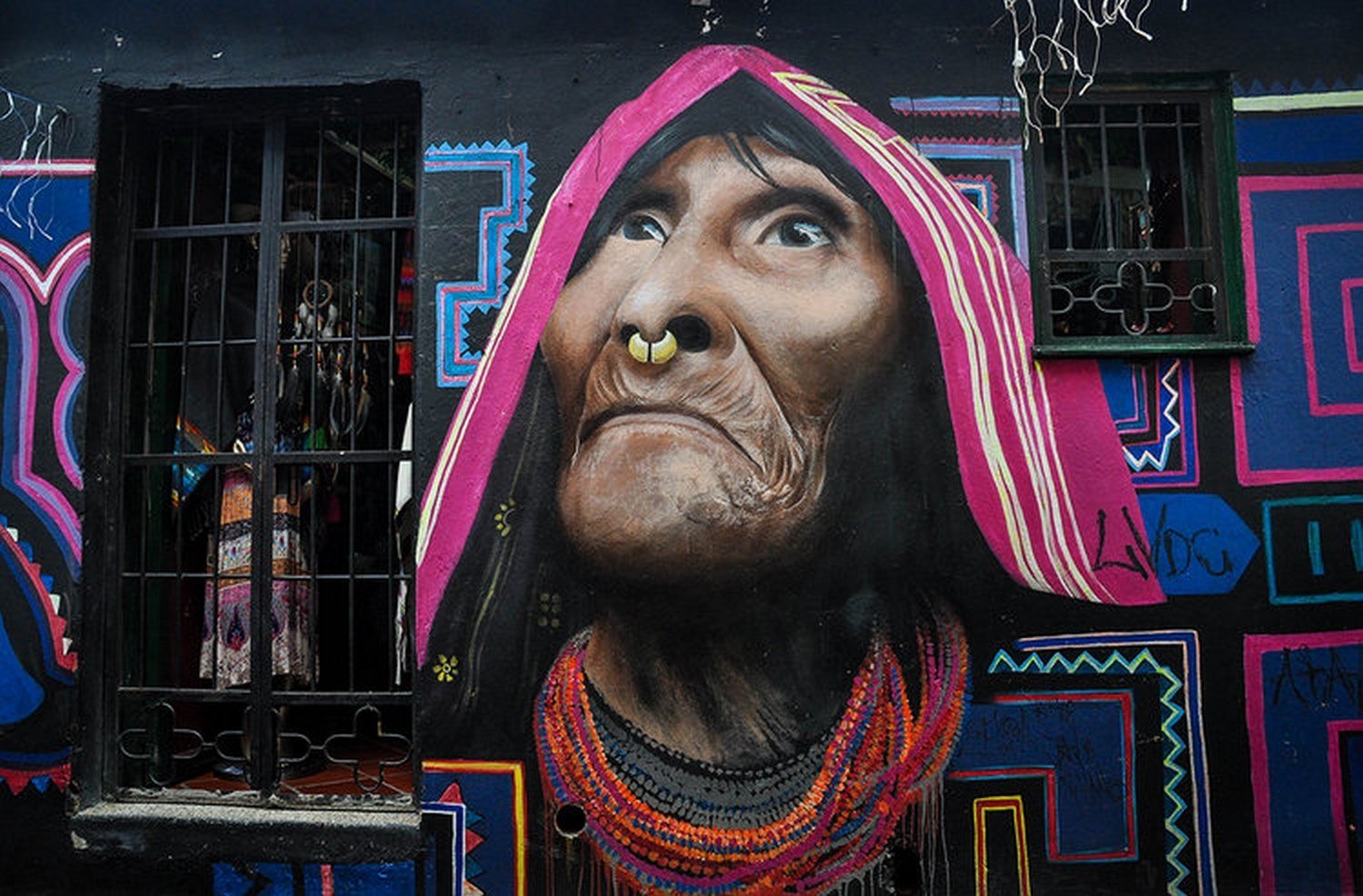
During my time in Colombia, a campaign was launched to publicize 11 different travel routes through 64 towns, many of which had been unknown to tourists during the country’s time of conflict.
The ministry of tourism is expecting an increase in the number of travelers this year, and is excited about the opportunity this will provide to communities that have been overlooked in the past. They are hoping opening up these areas to tourism will bring wealth and development to regions that need it.
Places I visited in Colombia:
What Sustainable Tourism means for: Baja Peninsula, Mexico
Passion, Authenticity, Origin

The Baja Peninsula has a fragile ecosystem that has been compared to that of the Galápagos Islands. French explorer Jacques Cousteau once called the Sea of Cortez the “aquarium of the world” for its biodiversity. So there truly is a lot at stake in this beautiful area.
Protecting these precious reefs is especially important with the rapid growth of tourism in the Baja Peninsula. I was told briefly of a program set in place by the government to help protect the coral reefs, but truthfully, I didn’t get to see exactly what they are doing to protect it firsthand.
Chain hotels and restaurants dot the beaches of ultra-popular Cabo San Lucas, where the vibe feels a bit like “spring break”. Some of the neighboring communities however, like San Jose del Cabo, are taking note that smaller growth might be the key to a more sustainable future in a location where growth in tourism is imminent.
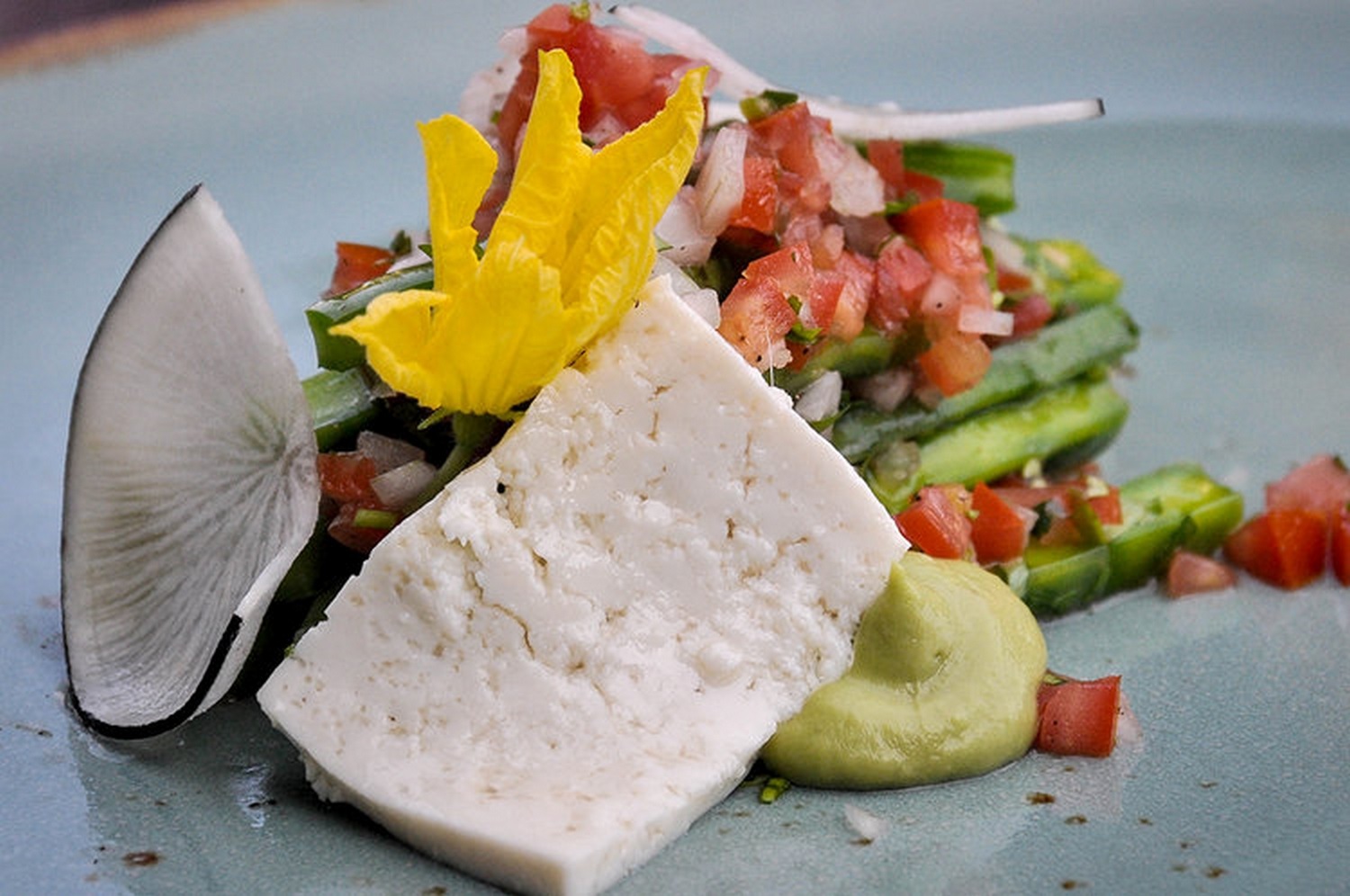

The thing that I experienced most during my stay in San Jose was passion. There was an overwhelming amount of people who had started their own projects directly related to their passions.
For instance, the hotel I stayed at, El Ganzo, has a focus on art. They have an on-site community center where they teach art classes to local children. They also have a program where they invite artists and musicians from around the world to create art on their property in exchange for their stay.
Also, a great deal of my time in San Jose was spent eating. And many of the restaurants in the Baja Peninsula have a focus on using locally grown, organic produce to create a whole new world of cuisine that’s unique to this region.
My hope for this place is that the passion of the people living here is harnessed in a tangible effort to protect the culture, the land and the ocean in the Baja Peninsula.
Places I visited in the Baja Peninsula:
- San Jose del Cabo
- Cabo Pulmo
What Sustainable Tourism means for: Ras Al Khaimah
Preservation, Competition, Deliberation

Just a 2-hour drive from the flashy skyscrapers of Dubai, lies the state of Ras Al Khaimah (often referred to simply as RAK). Unlike it’s more well-known neighbors, Dubai and Abu Dhabi, RAK is not rich in oil. And as such, they haven’t been able to rely on the black stuff to bring wealth.
Tourism is a growing contributor to Ras Al Khaimah’s economy, and with several hotels and resorts popping up, RAK is setting itself up as a mainstream vacation destination.
If I’m totally, completely honest with you, it is still hard for me to wrap my head around how Ras Al Khaimah is embracing sustainable tourism. As with much of the United Arab Emirates, it seems there is a big focus on having the longest, the highest, the biggest… In fact, just two weeks after I left, RAK unveiled the longest zip line in the world.
I think in many cases, sustainable tourism in this area of the world comes second to luxury tourism, but there are efforts being made to consider the environment and traditions of the locals.


After talking to a few people living in RAK, it seems like they are developing more slowly and deliberately than Dubai, and they want to have a bigger focus on outdoor activities than their air-conditioned neighbor. For instance, Jebel Jais, the highest peak in the UAE, is one of the top attractions in Ras Al Khaimah.
And where Dubai boasts luxury, RAK offers family-friendly resorts and promises more value for your money than its super glamorous neighbor. (Though I will mention, “value for your money” is a relative term when the point of comparison is Dubai.)
One man also told me that tourism is playing a big role in preserving the ancient history and cultures that may otherwise be forgotten in lieu of nation that is heavily focused on modernization.

When it comes to the hospitality industry, the UAE is second to none. I mean, I stayed at the nicest, most luxurious hotel I’ve ever stayed at in my life. Can you say private pool in the desert?!
Super sustainable? Nah, not so much. But it was absolutely divine.
Places I visited in Ras Al Khaimah:
- Wadi Desert
- Ras Al Khaimah City
- Jebel Jais mountain
What Sustainable Tourism means for: Germany
Innovation, Efficiency, Accessibility

It is hard to imagine a country that is a better example of green living. Germany has long been a leader of innovation and efficiency, and in today’s world this means their systems and infrastructure are leading examples of sustainability.
Sustainable living isn’t a luxury in Germany: it’s the norm. It is what Germans have come to know and expect, and all of the locals I spoke with have an extremely well-rounded understanding of their impact on the environment and ways they can lessen it.
Community gardens, bike lanes, grocery stores selling food in bulk without packaging, art movements, communities developed with inclusivity in mind, recycling bins on street corners… These are all commonplace in many cities and towns around Germany.
Every single hotel I stayed in Germany was thoughtfully chosen because of its commitment to the environment. And if I’m honest with you, they put most of the hotels I’ve stayed at around the world to shame when it comes to sustainable practices.


With a recent influx of immigrants, there is a tangible focus on including all people regardless of background and ability. While in Hamburg, I got a tour of HafenCity, a neighborhood that is being mindfully developed. My guide was a city planner, and he explained to me that they are growing this neighborhood to include people of all socioeconomic backgrounds, ages, religions and abilities.
And on another note, all throughout the country, the public transportation is designed with people of all abilities in mind – with wheelchair access being noticeably present. Including people of all abilities is a priority and many things, from outdoor recreation to public transportation to hotels are increasingly accessible.
From its public transportation to its standard for eco-conscious hotels, Germany is setting many examples of environmentally-focused sustainability that the rest of the world can learn from.
Places I visited in Germany:
- Hamburg
- Bremer
- Bremerhaven
- Celle
- Leipzig
- Berlin
What Sustainable Tourism means for: Switzerland
Local, Quality, Tradition

Switzerland is a country where it’s easy to make good decisions for the environment. The government supports programs that are actively reducing our footprint; and there is a big focus on supporting local businesses, artisans and growers.

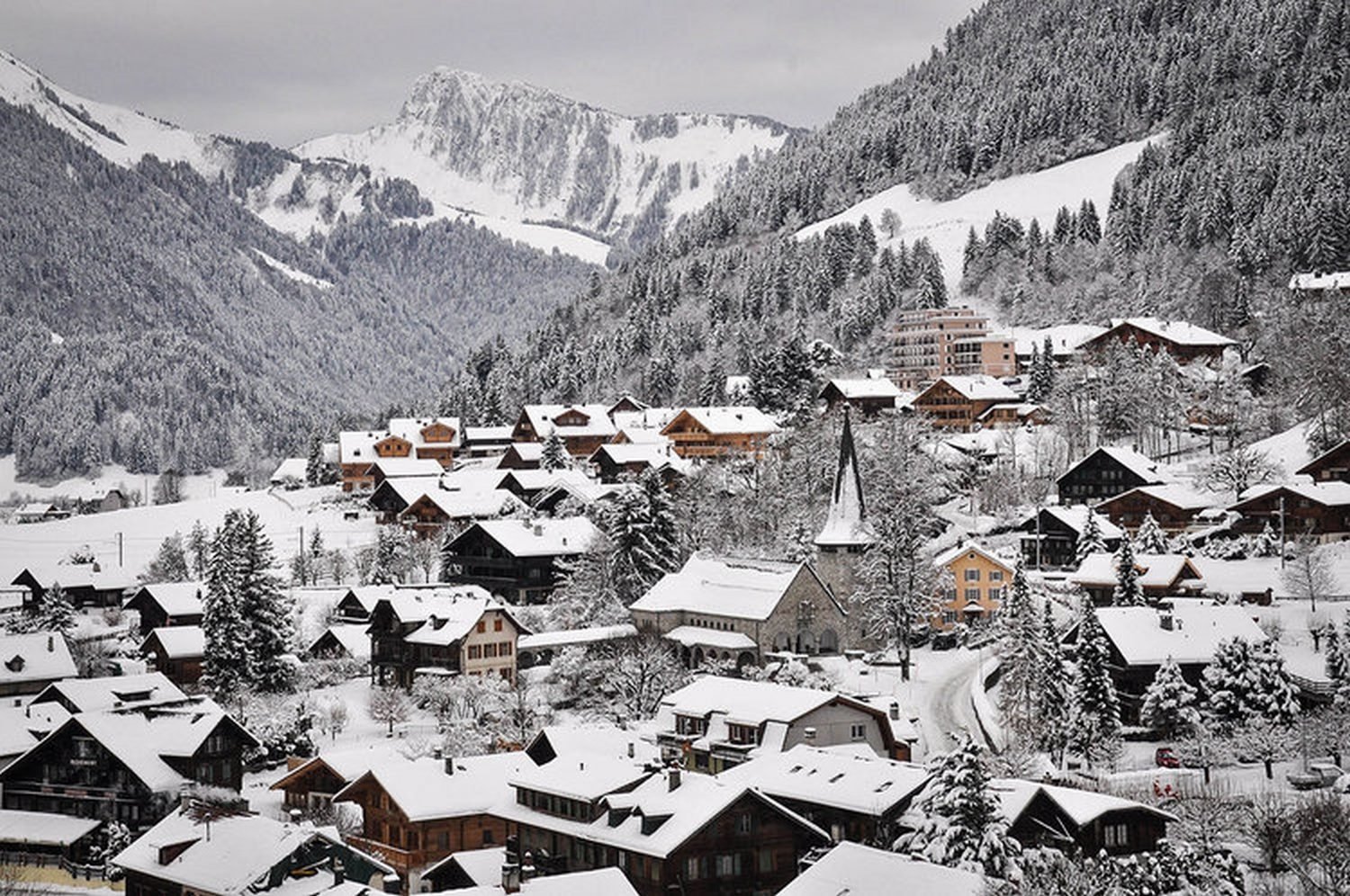
While I feel like sustainability plays a bigger role in everyday living than it does in the tourism sector, there are some aspects that are intertwined so both locals and tourists can take advantage.
For instance, it is easy to support local businesses as a traveler in Switzerland, and it is nearly impossible to miss the opportunity of taking the super convenient public transportation.
Tourism also plays a large role in preserving the traditional artisan ways of making cheeses and folk art.
Places I visited in Switzerland:
- Lausanne
- Montreux
- Vevey
- Cully
- Epesses
- Château-d’Oex
- Geneva
My final thoughts
Each country I visited on my trip with the UNWTO taught me something different about what sustainable tourism means, and I cherished my experiences in each place. I will be forever grateful for this opportunity, and I know that I will be processing all I learned for a very long time.
I want to express my gratitude for your continued support and interest in learning about responsible tourism. If we all make small changes to our daily lives and to the way we travel, there’s no doubt in my mind that we can bring more good change to the world.
Want more stories from my trip with the UNWTO?

Wanna know exactly what I did on my month-long, round-the-word trip with the UNWTO?
Come paragliding with me, and jump into clear blue waters with a snorkel and fins! Drink glüwein at Christmas markets and visit mountain towns worthy of a postcard. Check out my stories from my month of travel on this adventure of a lifetime!
Interested in learning more about Responsible Travel?
We are passionate about traveling in a way that is ethical, sustainable and responsible. Visit our resources page on Responsible Tourism to learn more about how you can create a positive impact everywhere you travel! Or read some of our favorite articles on responsible travel below…
- 36 Tips for Traveling Responsibly
- How Much is Your Selfie Worth?
- How to Plan a Sustainable & Eco-Friendly Trip
- Eco-Friendly Products for Responsible Travelers
Save this article on Pinterest for later!
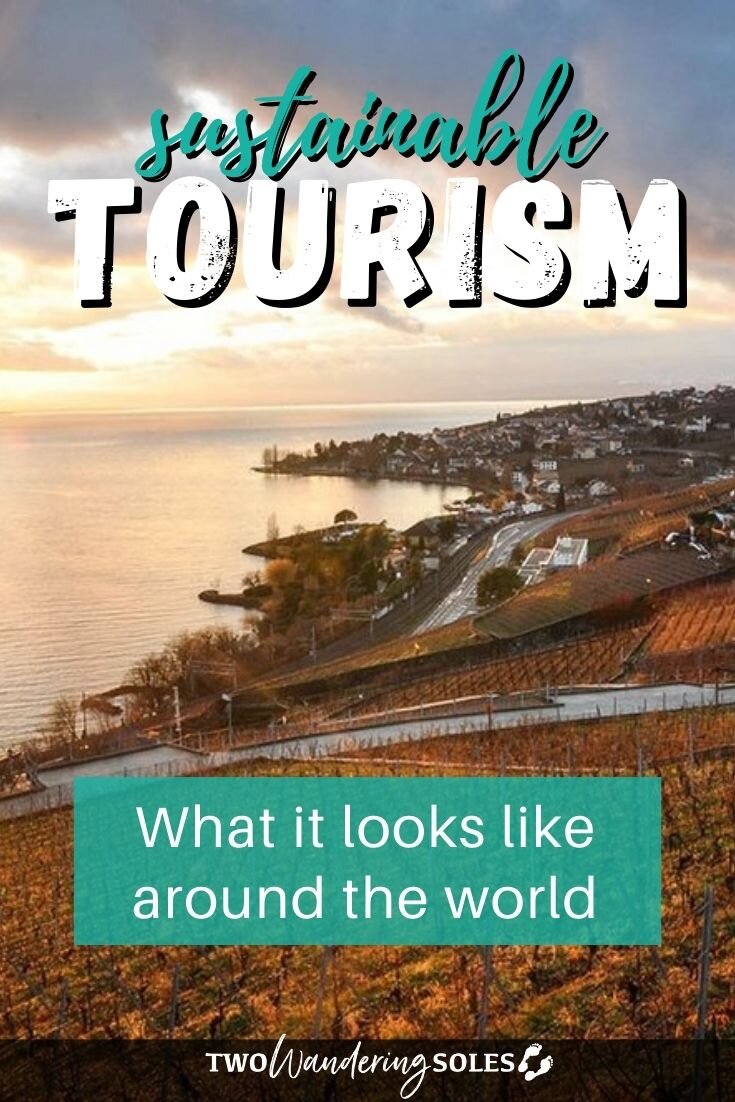

We want to hear from you!
What does sustainable tourism mean to you in your country? What did you learn about sustainable tourism? Please let us know your thought in the comments below.

Colombia to Germany!
Hello,
I just want to say this article was so inspiring, so beautiful and honestly made me cry. Everything was so beautifully worded, and it is so nice to see that someone still holds values that are more important than just making a profit. Your article truly showed me that there is more to life than working everyday just to survive. I grew up in a small town in South Georgia. I was very sheltered as a child with very little guidance. I had to teach myself and guide myself to learn about the world, learn about myself and what is truly important. I got emotional because I know I have missed out on a lot and I am doing everything in my power to change that. I am 24 years old and I want to live life like you. I would love a response, or maybe we could just chat. I am open to any guidance. Thank you for listening. Please keep posting!